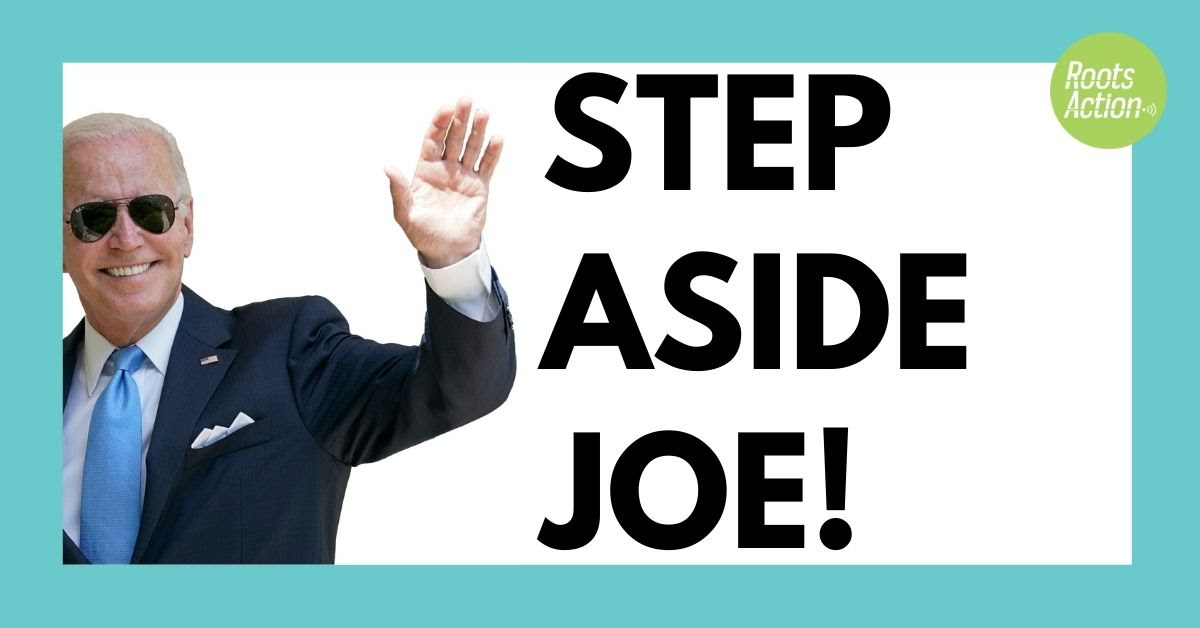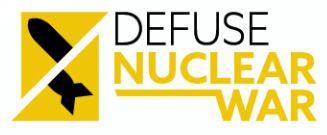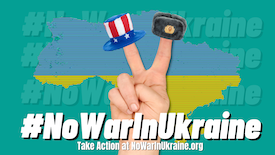Disinformation has become a central tool in the United States and Russia’s expanding information war.
US officials have openly admitted to “using information as a weapon even when the confidence and accuracy of the information wasn’t high,” with corporate media eager to assist Washington in its strategy to “pre-empt and disrupt the Kremlin’s tactics, complicate its military campaign” (NBC, 4/6/22).
In defense of the US narrative, corporate media have increasingly taken to branding realities inconvenient to US information goals as “disinformation” spread by Russia or its proxies.
The New York Times (1/25/22) reported that Russian disinformation doesn’t only take the form of patently false assertions, but also those which are “true but tangential to current events”—a convenient definition, in that it allows accurate facts to be dismissed as “disinformation.” But who determines what is “tangential” and what is relevant, and what are the guiding principles to make such a determination? In this assessment, Western audiences are too fickle to be trusted with making up their own mind.
There’s no denying that Russia’s disinformation campaign is key to justifying its war on Ukraine. But instead of uncritically outsourcing these decisions to Western intelligence officials and weapons manufacturers, and as a result erasing realities key to a political settlement, the media’s ultimate guiding principle for what information is “tangential” should be whether it is relevant to preventing the further suffering of Ukrainian civilians—and reducing tensions between the world’s two largest nuclear powers.
For Western audiences, and US citizens in particular, labeling or otherwise marginalizing inconvenient realities as “disinformation” prevents a clear understanding of how their government helped escalate tensions in the region, continues to obstruct the possibility of peace talks, and is prepared to, as retired senior US diplomat Chas Freeman describes it, “fight to the last Ukrainian” in a bid to weaken Russia.
Coup ‘conspiracy theory’

The New York Times (4/11/22) drew a red line through Benjamin Norton for advancing the “conspiracy theory” that “US officials had installed the leaders of the current Ukrainian government.” Eight years ago, the Times (2/6/14) reported as straight news the fact that US “diplomats candidly discussed the composition of a possible new government to replace the pro-Russian cabinet of Ukraine’s president.”
For example, the New York Times (4/11/22) claimed that US support for the 2014 “Maidan Revolution” that ousted Ukraine’s democratically elected President Viktor Yanukovych was a “conspiracy theory” being peddled by the Chinese government in support of Russia. The article featured an image with a red line crossing out the face of journalist Benjamin Norton, who was appearing on a Chinese news channel to discuss how the US helped orchestrate the coup. (Norton wrote for FAIR.org frequently from 2015–18.) The evidence he presented—a leaked call initially reported by the BBC in which then–State Department official Victoria Nuland appears to select opposition leader Arseniy Yatsenyuk to be Ukraine’s new prime minister—is something, he noted, that the Times itself has reported on multiple times (2/6/14, 2/7/14).
Not having been asked for comment by the Times, Norton responded in a piece of his own (Multipolarista, 4/14/22), claiming that the newspaper was “acting as a tool of US government information warfare.”
Beyond Nuland’s apparent coup-plotting, the US campaign to destabilize Ukraine stretched back over a decade. Seeking to isolate Russia and open up Ukraine to Western capital, the US had long been “fueling anti-government sentiment through mechanisms like USAID and National Endowment for Democracy (NED)” (FAIR.org, 1/28/22). High-profile US officials like Sen. John McCain even went so far as to rally protesters in the midst of the Maidan uprising.
In the wake of the far right–led and constitutionally dubious overthrow, Russia illegally annexed the Crimean Peninsula and supported a secession movement in the eastern Donbass region, prompting a repressive response from Ukraine’s new US-backed government. Eight years later, the civil war has killed more than 14,000. Of those deaths, 3,400 were civilian casualties, which were disproportionately in separatist-controlled territories, UN data shows. Opinions on remaining in Ukraine vary within the Donbass.
When the Timescovered the Russian annexation of Crimea, it acknowledged that the predominantly ethnic Russian population there viewed “the Ukrainian government installed after the ouster last weekend of Mr. Yanukovych as the illegitimate result of a fascist coup.” But now the newspaper of record is using allegations of disinformation to change the record.
To discredit evidence of US involvement in Ukraine’s 2014 regime change hides crucial facts that could potentially support a political solution to this crisis. When the crisis is reduced merely to the context of Russian aggression, a peace deal that includes, for example, a referendum on increased autonomy for the Donbass seems like an outrageous thing for Ukraine to have to agree to. But in the context of a civil war brought on by a US-backed coup—a context the Times is eager to erase—it may appear a more palatable solution.
More broadly, Western audiences that are aware of their own government’s role in sparking tensions may have more skepticism of Washington’s aims and an increased appetite for peace negotiations.
Normalizing neo-Nazis

In 2018, the Atlantic Council (6/20/18) wrote that the Ukraine government “tacitly accepting or even encouraging the increasing lawlessness of far-right groups” “sounds like the stuff of Kremlin propaganda, but it’s not.”
The outsized influence of neo-Nazi groups in Ukrainian society (Human Rights Watch, 6/14/18)—including the the Azov Regiment, the explicitly neo-Nazi branch of Ukraine’s National Guard—is another fact that has been dismissed as disinformation.
Western outlets once understood far-right extremism as a festering issue (Haaretz, 12/27/18) that Ukraine’s government “underplayed” (BBC, 12/13/14). In a piece called “Ukraine’s Got a Real Problem with Far-Right Violence (and No, RT Didn’t Write This Headline),” the Atlantic Council (UkraineAlert, 6/20/18) wrote:
Amnesty International, Human Rights Watch, Freedom House and Front Line Defenders warned in a letter that radical groups acting under “a veneer of patriotism” and “traditional values” were allowed to operate under an “atmosphere of near total impunity that cannot but embolden these groups to commit more attacks.”
To be clear, far-right parties like Svoboda perform poorly in Ukraine’s polls and elections, and Ukrainians evince no desire to be ruled by them. But this argument is a bit of “red herring.” It’s not extremists’ electoral prospects that should concern Ukraine’s friends, but rather the state’s unwillingness or inability to confront violent groups and end their impunity.
Read the rest at FAIR.










